ring
所属分类:Linux/Unix编程
开发工具:C
文件大小:0KB
下载次数:0
上传日期:2023-06-26 02:00:02
上 传 者:
sh-1993
说明: 用于应用程序开发的简单灵活的编程语言
(Simple and flexible programming language for applications development)
文件列表:
.travis.yml (2090, 2023-12-17)
CODE_OF_CONDUCT.md (4545, 2023-12-17)
LICENSE (1075, 2023-12-17)
RingCMD.bat (64, 2023-12-17)
applications/ (0, 2023-12-17)
applications/analogclock/ (0, 2023-12-17)
applications/analogclock/AnalogClock.ring (9251, 2023-12-17)
applications/analogclock/HermleClock.jpg (884997, 2023-12-17)
applications/asciitable/ (0, 2023-12-17)
applications/asciitable/AsciiTable.ring (1860, 2023-12-17)
applications/asciitable/asciitable.png (24760, 2023-12-17)
applications/bmicalculator/ (0, 2023-12-17)
applications/bmicalculator/BMI.png (33394, 2023-12-17)
applications/bmicalculator/BMI_Calculator.ring (7268, 2023-12-17)
applications/bmicalculator/bmiHistory.db (16384, 2023-12-17)
applications/bmicalculator/bmi_icon.png (1639, 2023-12-17)
applications/calculator/ (0, 2023-12-17)
applications/calculator/FactorialX.png (18020, 2023-12-17)
applications/calculator/Pi.png (21483, 2023-12-17)
applications/calculator/SquareRootX.png (6703, 2023-12-17)
applications/calculator/SquareX.png (20212, 2023-12-17)
applications/calculator/calc-gui.ring (23508, 2023-12-17)
applications/calculator/calc.db (4096, 2023-12-17)
applications/calculator/calc.png (771, 2023-12-17)
applications/calculator/calc_screenshot.png (134839, 2023-12-17)
applications/calendar/ (0, 2023-12-17)
applications/calendar/Calendar.ring (5183, 2023-12-17)
applications/calendar/appscreenshot.png (54865, 2023-12-17)
applications/calendar/calendar.png (2113, 2023-12-17)
applications/cards/ (0, 2023-12-17)
applications/cards/cards.jpg (333670, 2023-12-17)
... ...

# Ring Programming Language
## Simple and flexible programming language for applications development
| |*Resources*|
|---|---|
|Download |[](https://ring-lang.github.io/download.html)|
|Help |[](https://ring-lang.github.io/doc1.19/index.html)|
|Try |[](https://tio.run/#Ring)|
|Extra |[](https://ring-lang.github.io/resources.html)|
# Contents:
- [Welcome to Ring](#welcome-to-ring)
- [Get Excited!](#get-excited)
- [Batteries Included!](#batteries-included)
- [Practical](#practical)
* [Custom Styles And Modern Programming Paradigms](#custom-styles-and-modern-programming-paradigms)
* [GUI Applications Development And RAD Tools](#gui-applications-development-and-rad-tools)
* [First Class Support For Game Development](#first-class-support-for-game-development)
* [WebAssembly (Front-End Web Development)](#webassembly-front-end-web-development)
* [Back-End Web Development](#back-end-web-development)
* [Mobile Development](#mobile-development)
* [Building Tools (Command Line)](#building-tools-command-line)
- [Why Ring?](#why-ring)
* [Designed for a Clear Goal](#designed-for-a-clear-goal)
* [Simple](#simple)
* [Trying to be natural](#trying-to-be-natural)
* [Encourage Organization](#encourage-organization)
* [Data Representation](#data-representation)
* [Compact Syntax](#compact-syntax)
* [Syntax Flexibility](#syntax-flexibility)
* [Define Natural Statements based on Object-Oriented](#define-natural-statements-based-on-object-oriented)
* [Define Declarative Languages using Nested Structures based on Object-Oriented](#define-declarative-languages-using-nested-structures-based-on-object-oriented)
- [Implementation](#implementation)
* [Transparent Implementation](#transparent-implementation)
* [Visual Implementation](#visual-implementation)
* [Smart Garbage Collector](#smart-garbage-collector)
* [No Global Interpreter (VM) Lock - No GIL](#no-global-interpreter-vm-lock---no-gil)
* [Fast Enough For Many Applications](#fast-enough-for-many-applications)
- [Features](#features)
* [Syntax](#syntax)
* [Powerful Implementation](#powerful-implementation)
* [Simple](#simple-1)
* [Dynamic](#dynamic)
* [Object-Oriented Programming (OOP)](#object-oriented-programming-oop)
* [Standard Library](#standard-library)
* [Web Development](#web-development)
* [Extensions](#extensions)
* [More](#more)
- [Building from source code](#building-from-source-code)
- [License](#license)
# Welcome to Ring
Ring is a practical general-purpose multi-paradigm language.
The supported programming paradigms are Imperative, Procedural, Object-Oriented, Functional,
Metaprogramming, Declarative programming using nested structures, and Natural programming.
The language is portable (MS-DOS, Windows, Linux, macOS, Android, WebAssembly, etc.) and can be used to create
Console, GUI, Web, Games, and Mobile applications.
The language is designed to be Simple, Small, and Flexible.
# Get Excited
Ring comes with better support for Natural Language Programming and Declarative Programming.
The language support these paradigms with new practical techniques on top of Object-Oriented Programming and Functional Programming. No need to know anything about (Compilers and Parsing).
You get the language constructs ready for use to create domain-specific languages in a fraction of time.
* [Ring Article](https://www.codeproject.com/Articles/1089887/The-Ring-Programming-Language)
* [Syntax Flexibility](https://www.codeproject.com/Articles/1137388/Syntax-Flexibility-in-the-Ring-Programming-Languag)
* [The Declarative Approach](https://www.codeproject.com/Articles/1222105/The-declarative-approach-of-the-Ring-programming-l)
* [Natural Language Programming](https://www.codeproject.com/Articles/1138605/Natural-Language-Programming-in-the-Ring-Programmi)
* [Natural Language Programming Library](https://www.codeproject.com/Articles/1200766/Using-the-Natural-Language-Programming-Library-NLP)
* [Programming Without Coding Technology](https://github.com/ring-lang/ring/tree/master/marketing/pwct)
# Batteries Included
Ring comes with many high quality bindings for popular libraries
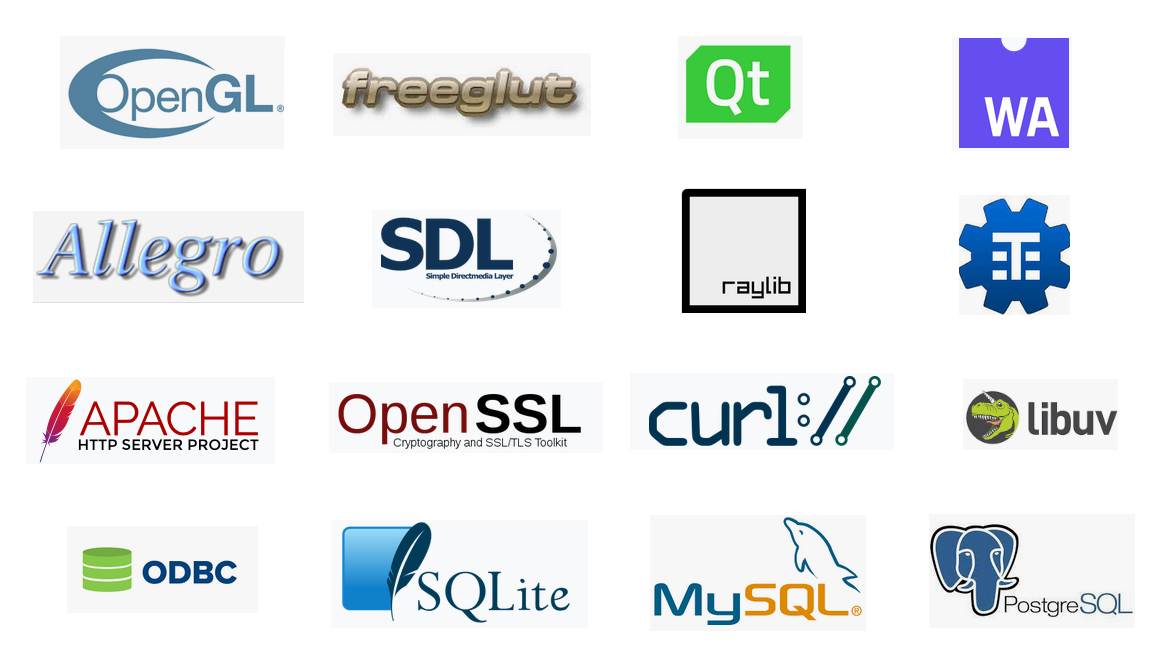
# Practical
Many of the Ring libraries (StdLib, WebLib, Natural Library, Games Engine, etc.) and the Ring IDE (Ring Notepad, Form Designer, etc.) are written in the Ring language itself. Ring is ready for use in production and increases the developers productivity.
## Custom Styles And Modern Programming Paradigms
Using Ring you will feel that the language is yours! A lot of modern programming paradigms are ready for use in production and using Natural Language Programming you can quickly integrate natural interfaces to your programs.
Also, you can start your software development by writing natural descriptions, then adding the implementation later.
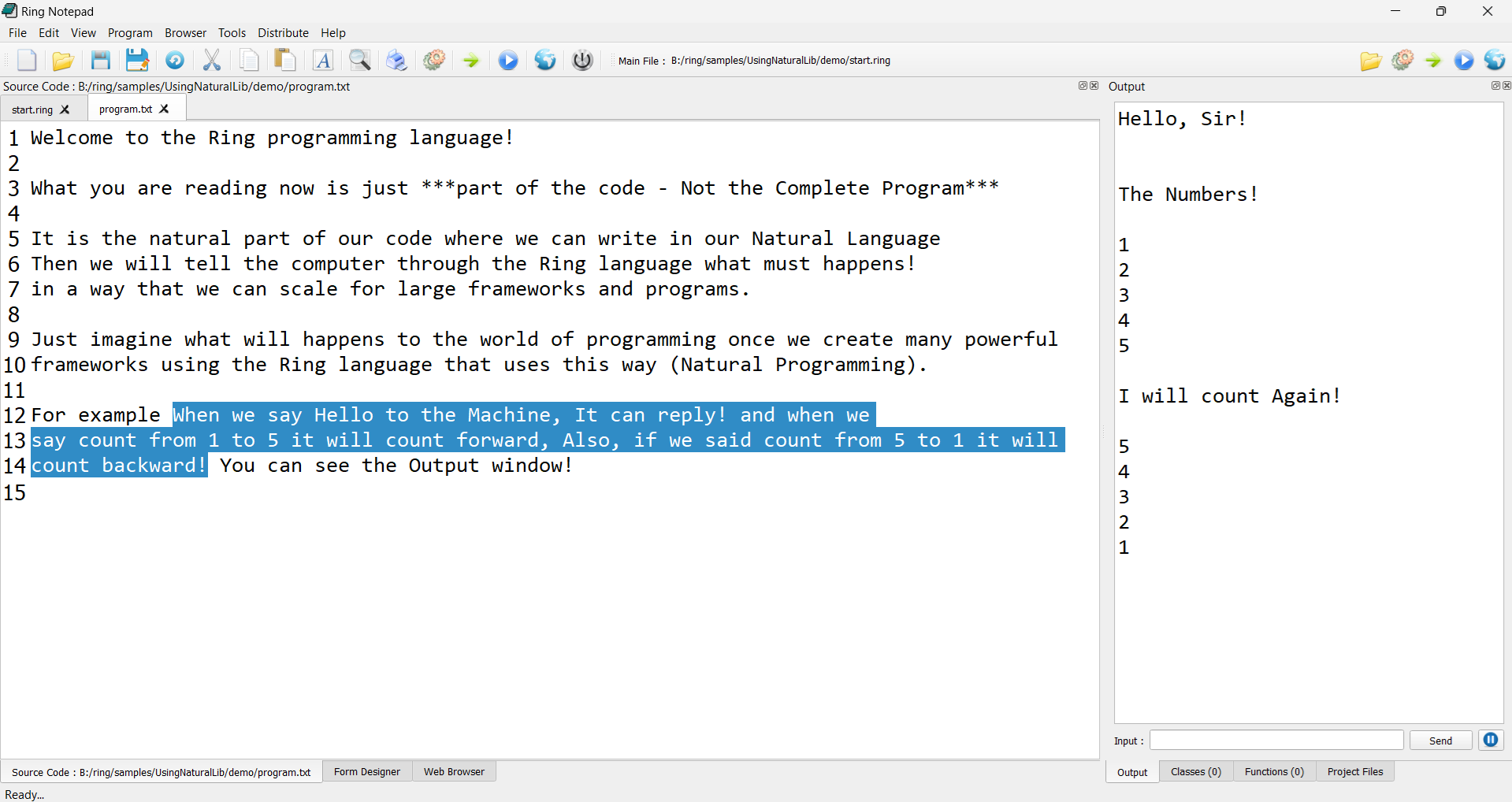
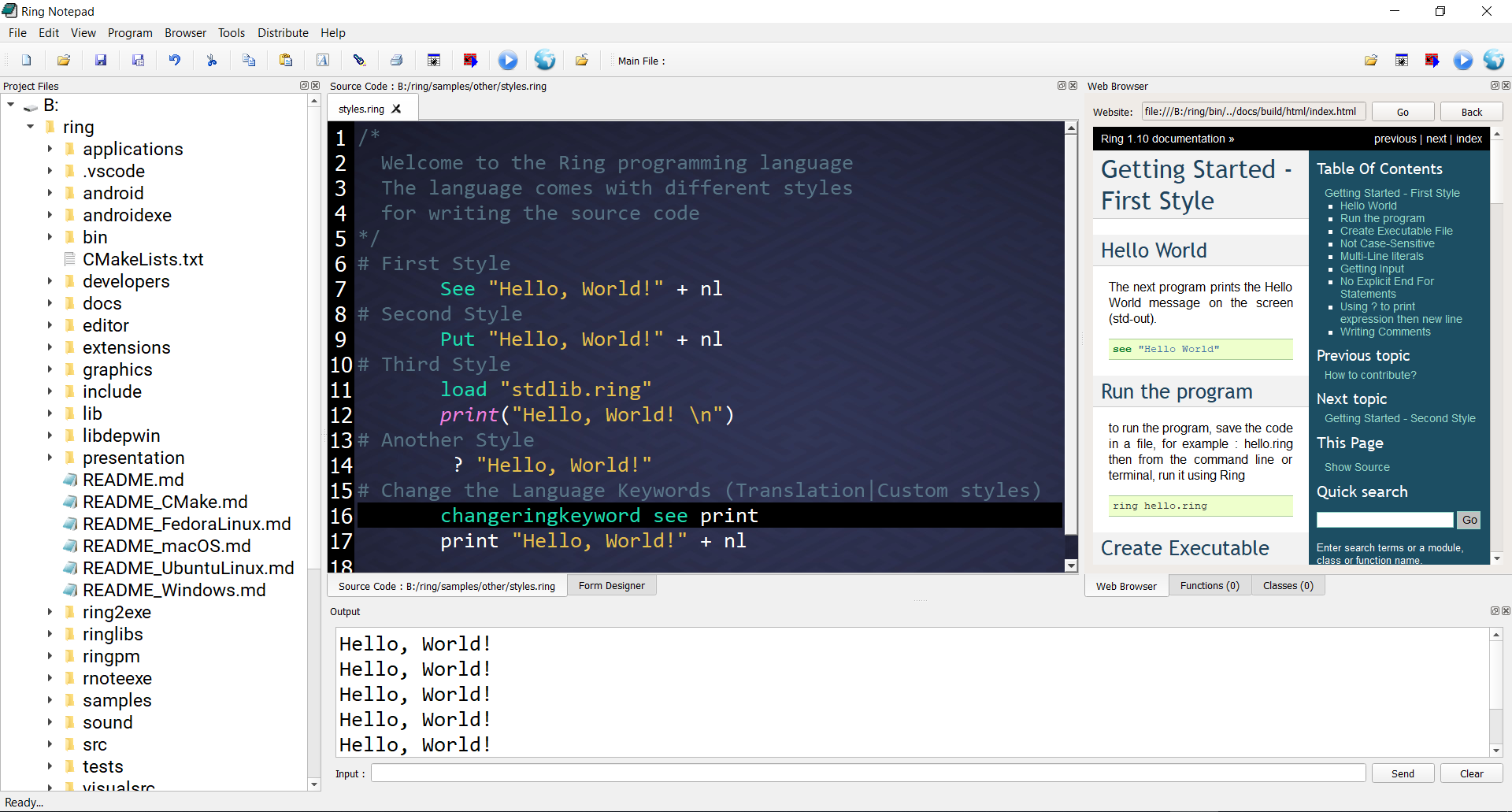
## GUI Applications Development And RAD Tools
Many developers reported that using Ring we can develop many GUI applications in a few hours.
Ring comes with Rapid Application Development (RAD) tools that we can use to quickly develop GUI applications using the MVC design pattern.
Also, using the same source code we can distribute our applications for Desktop, Web, and Mobile platforms.
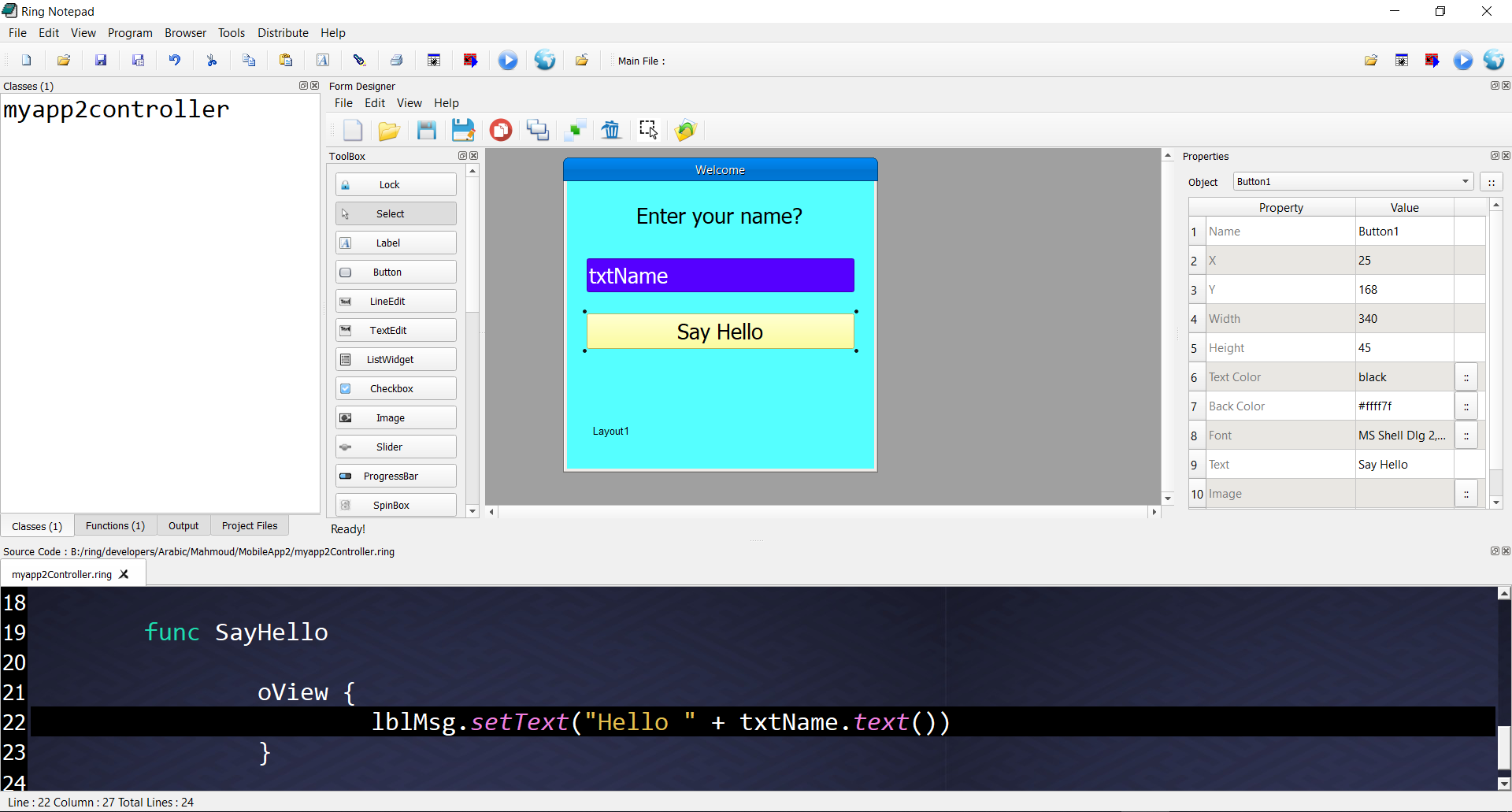
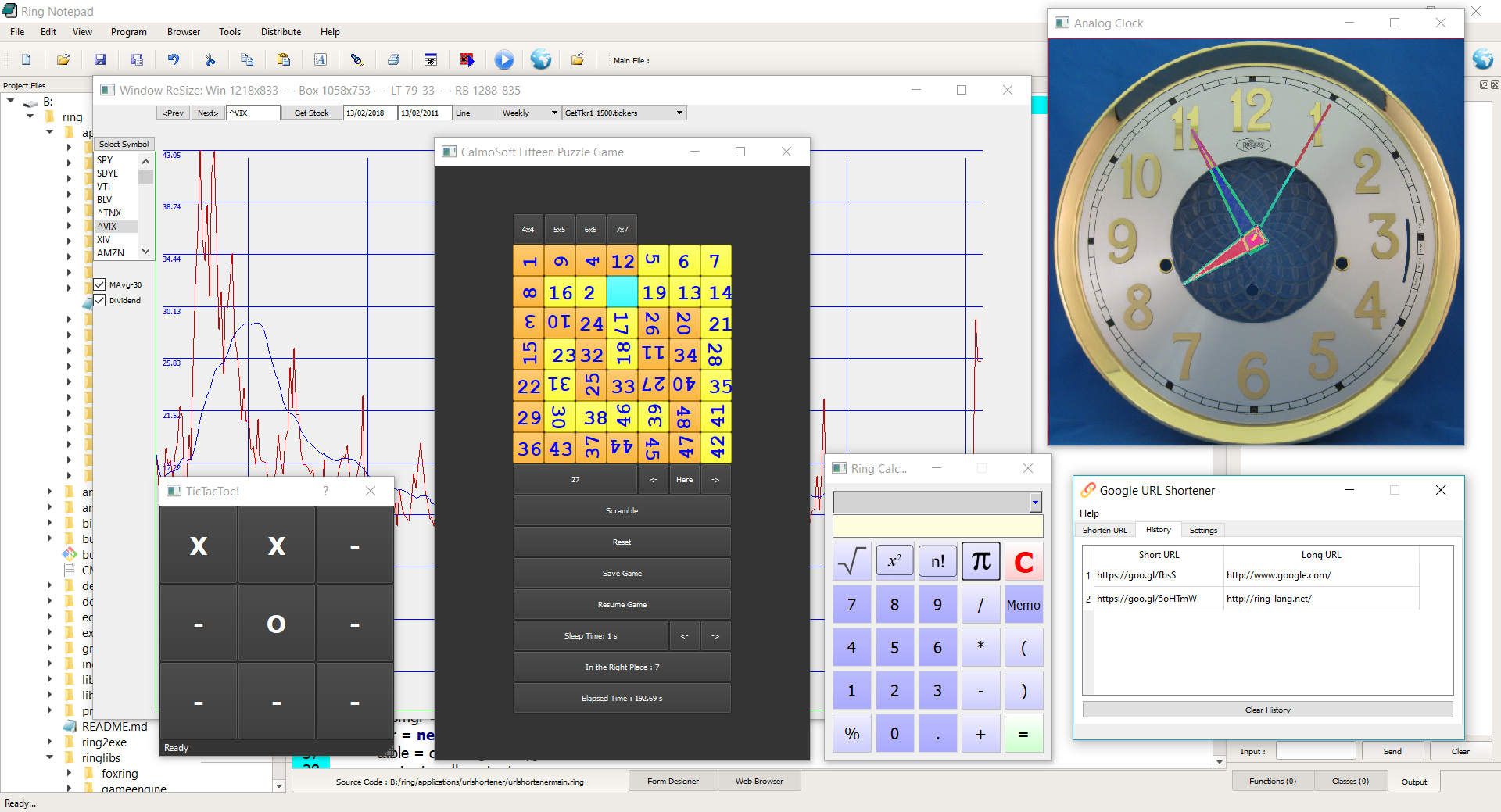
## First Class Support For Game Development
We believe in Games as a nice way to encourage people to learn to program.
Ring comes with many game programming libraries in the standard library.
Ring provides native support for Allegro, LibSDL, RayLib, OpenGL, FreeGLUT, Tilengine and Qt3D libraries.
Also, Ring comes with a simple game engine for 2D game development using Declarative Programming.

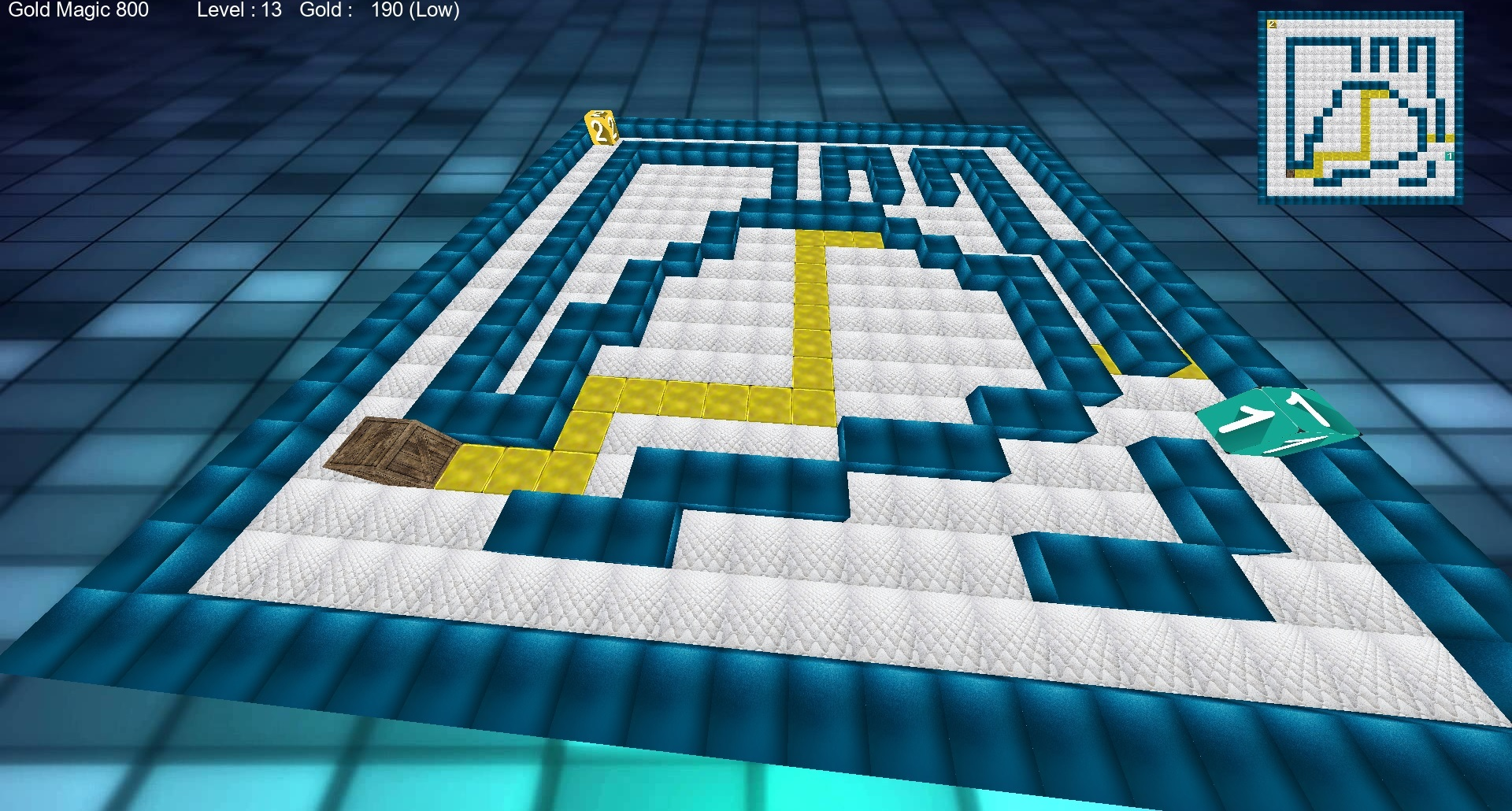
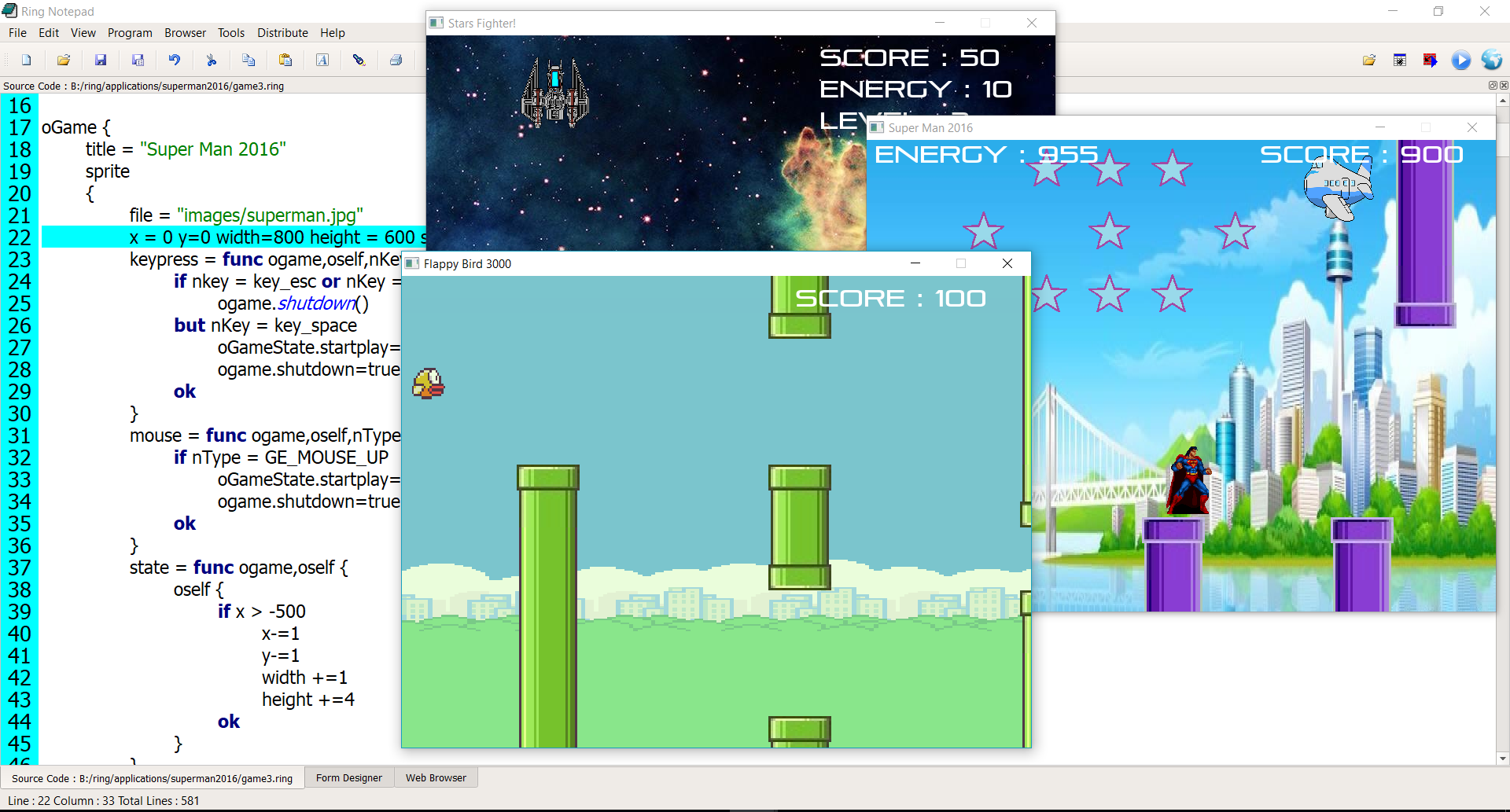
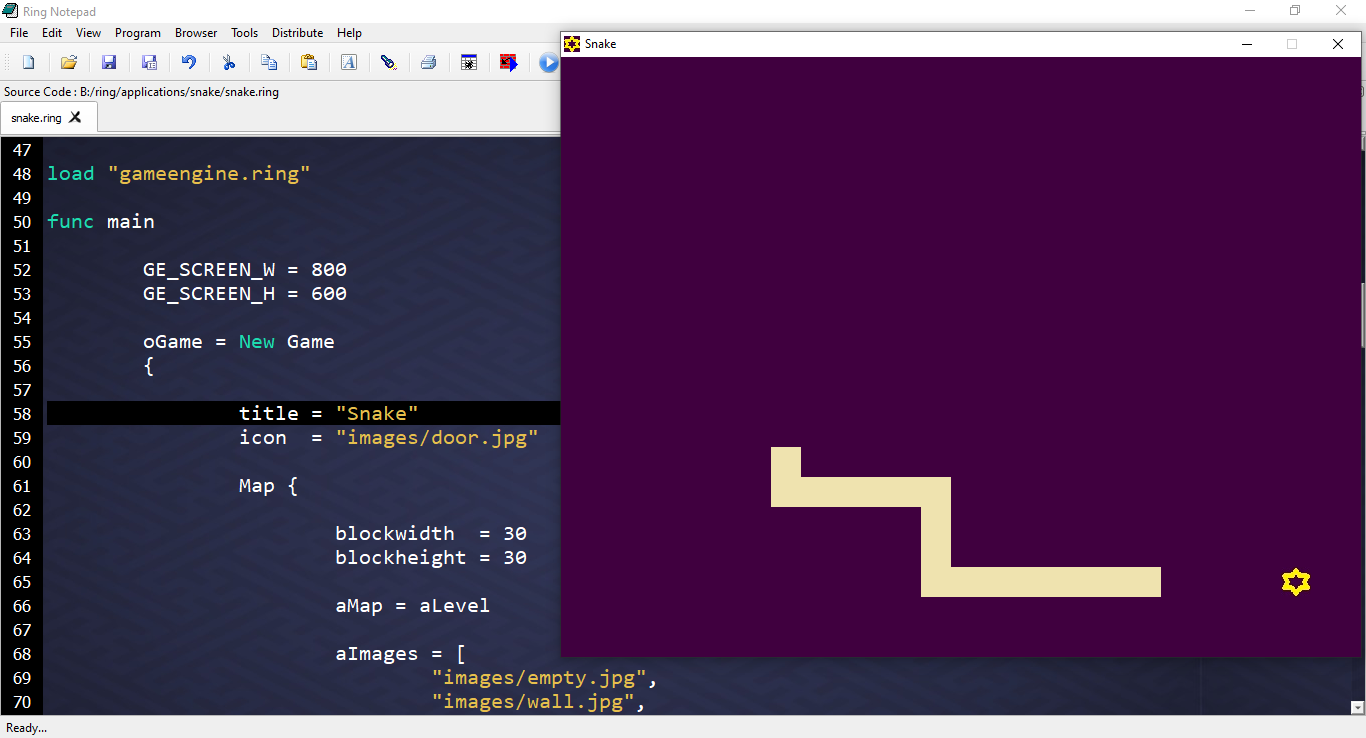
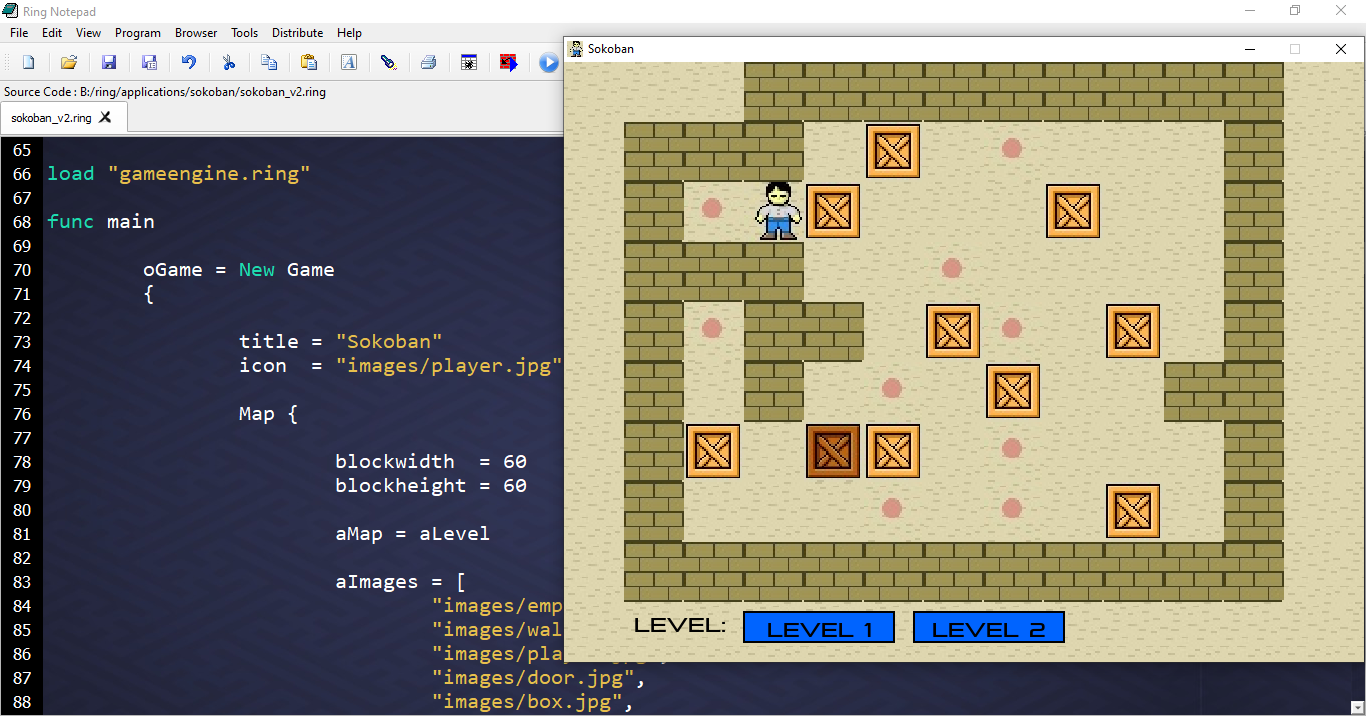
## WebAssembly (Front-End Web Development)
Using Ring we can quickly develop web applications using WebAssembly (Binary format that allows sand-boxed executable code in web pages. This format is nearly as fast as native machine code and is now supported by all major web browsers)

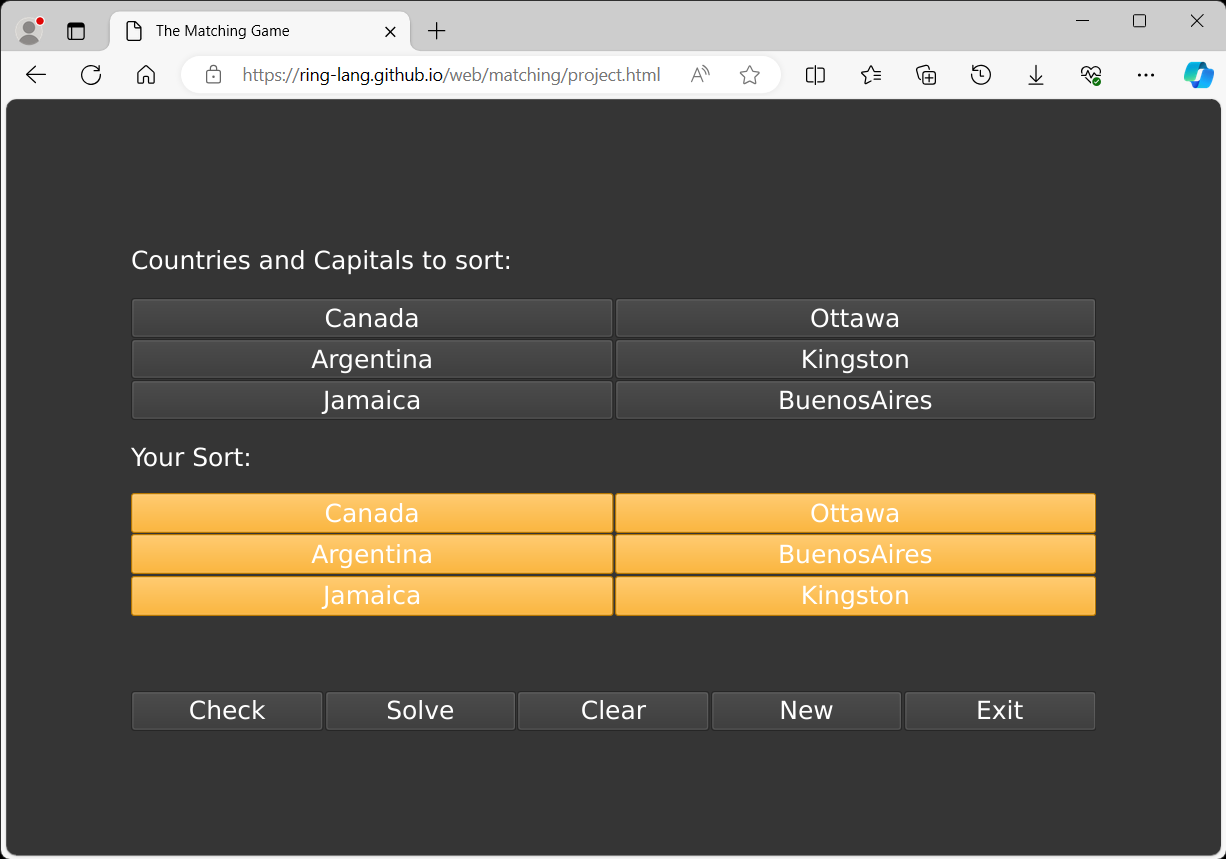
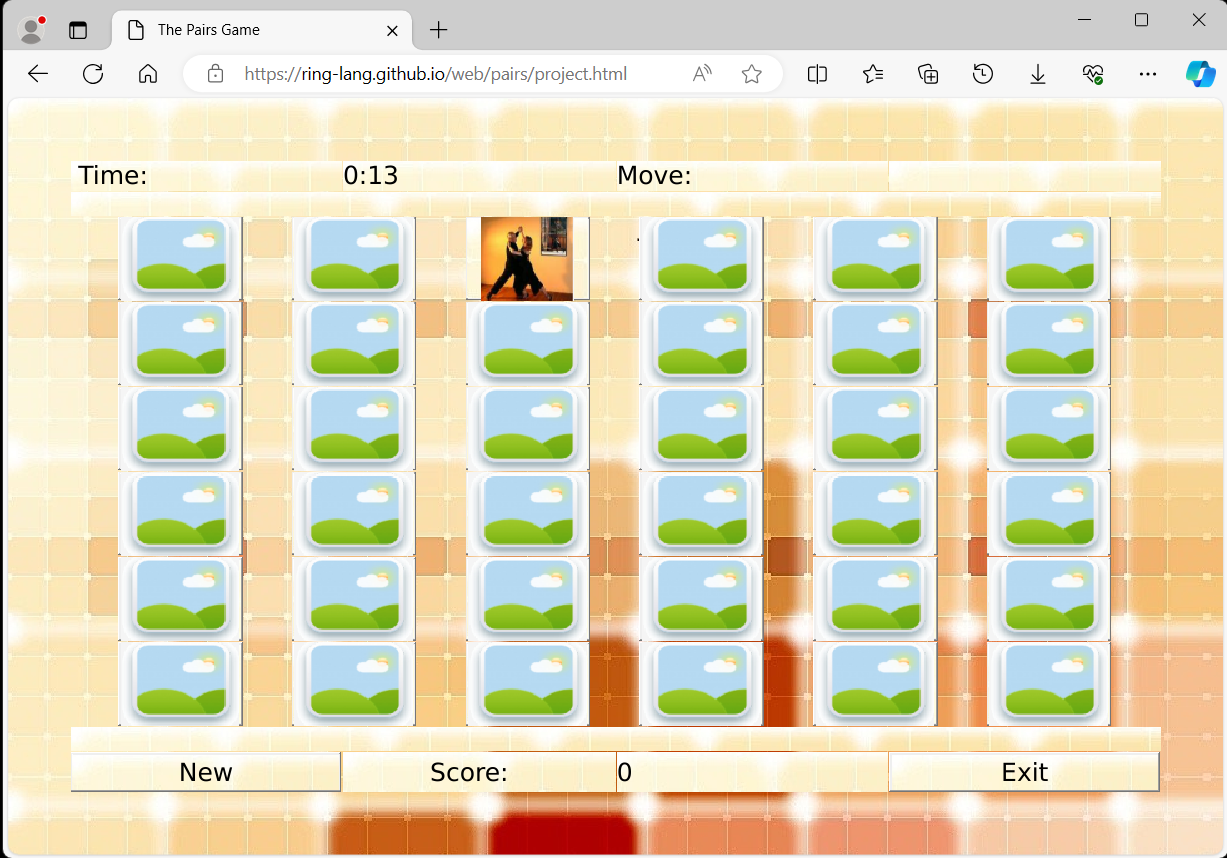
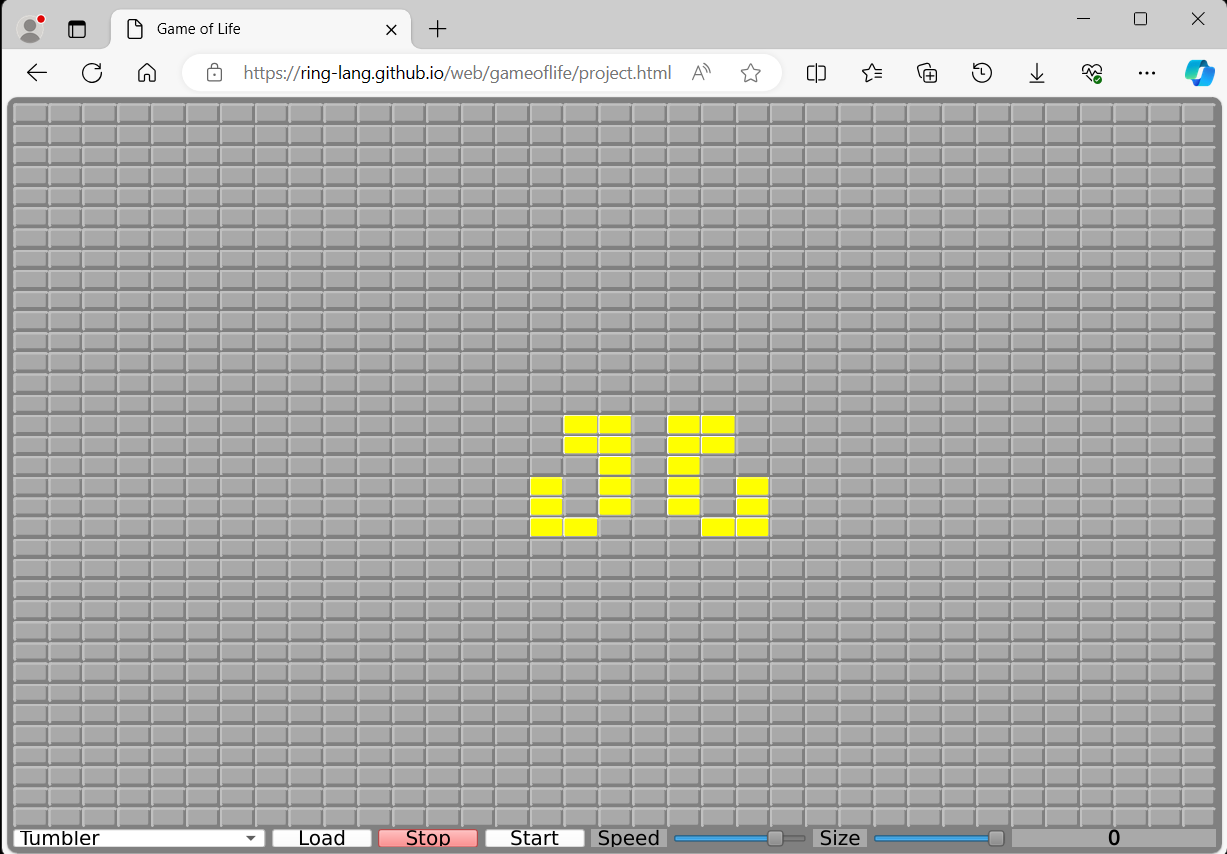
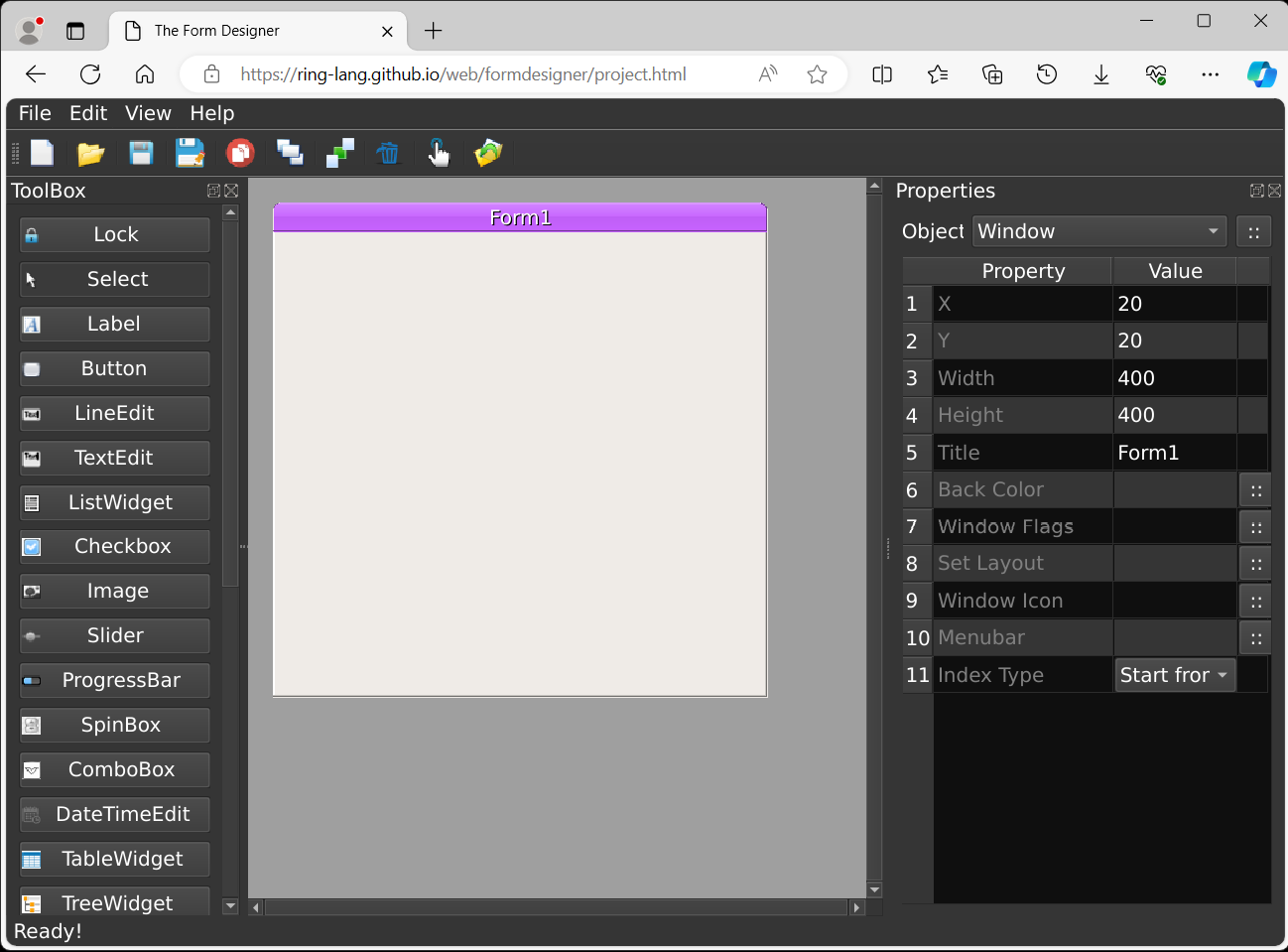
## Back-End Web Development
Using Ring we can quickly develop web applications using the MVC design pattern.
We can easily use HTML templates with embedded Ring code.
Also, we can generate HTML code from Ring programs using Declarative Programming.
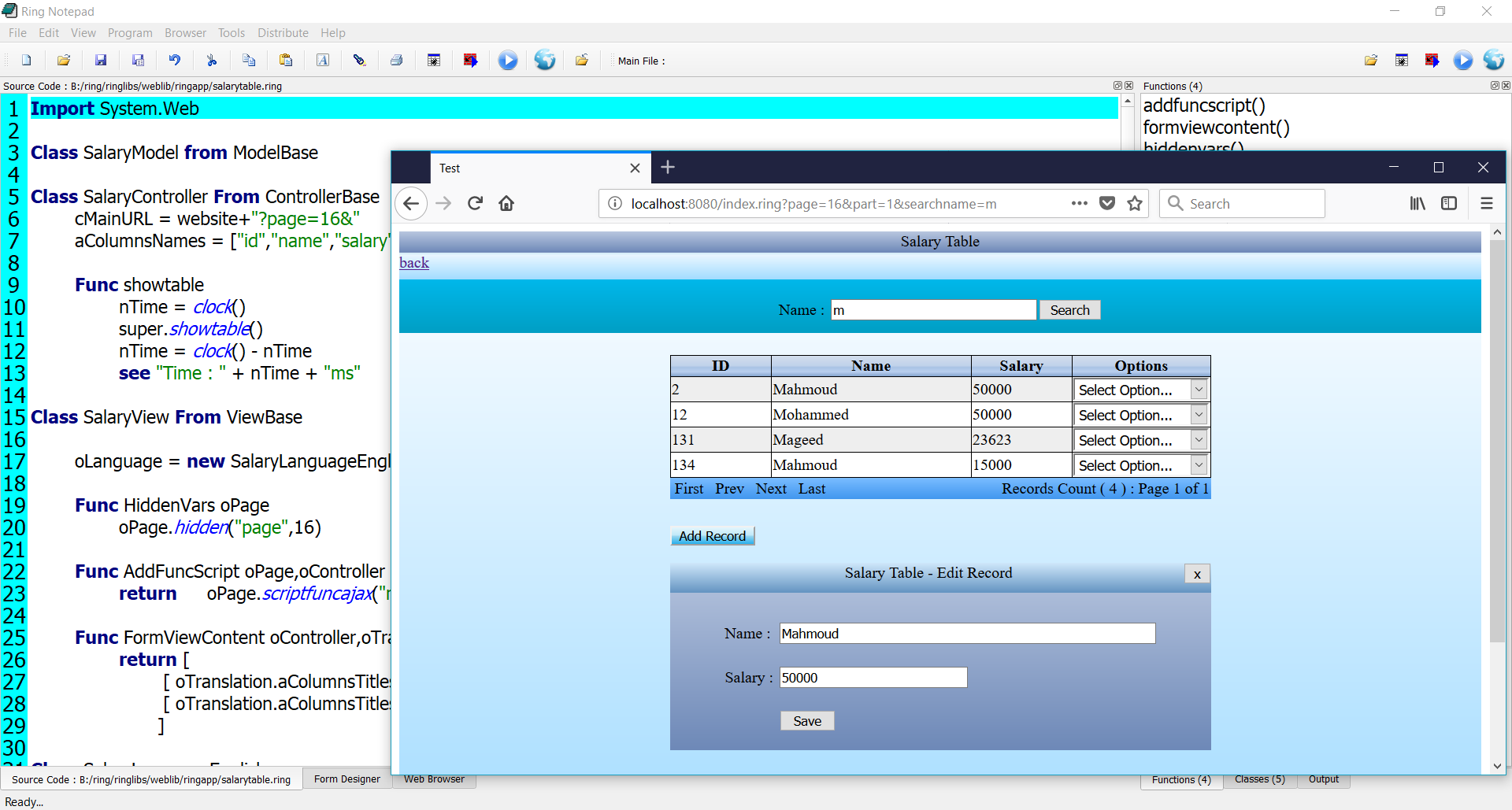
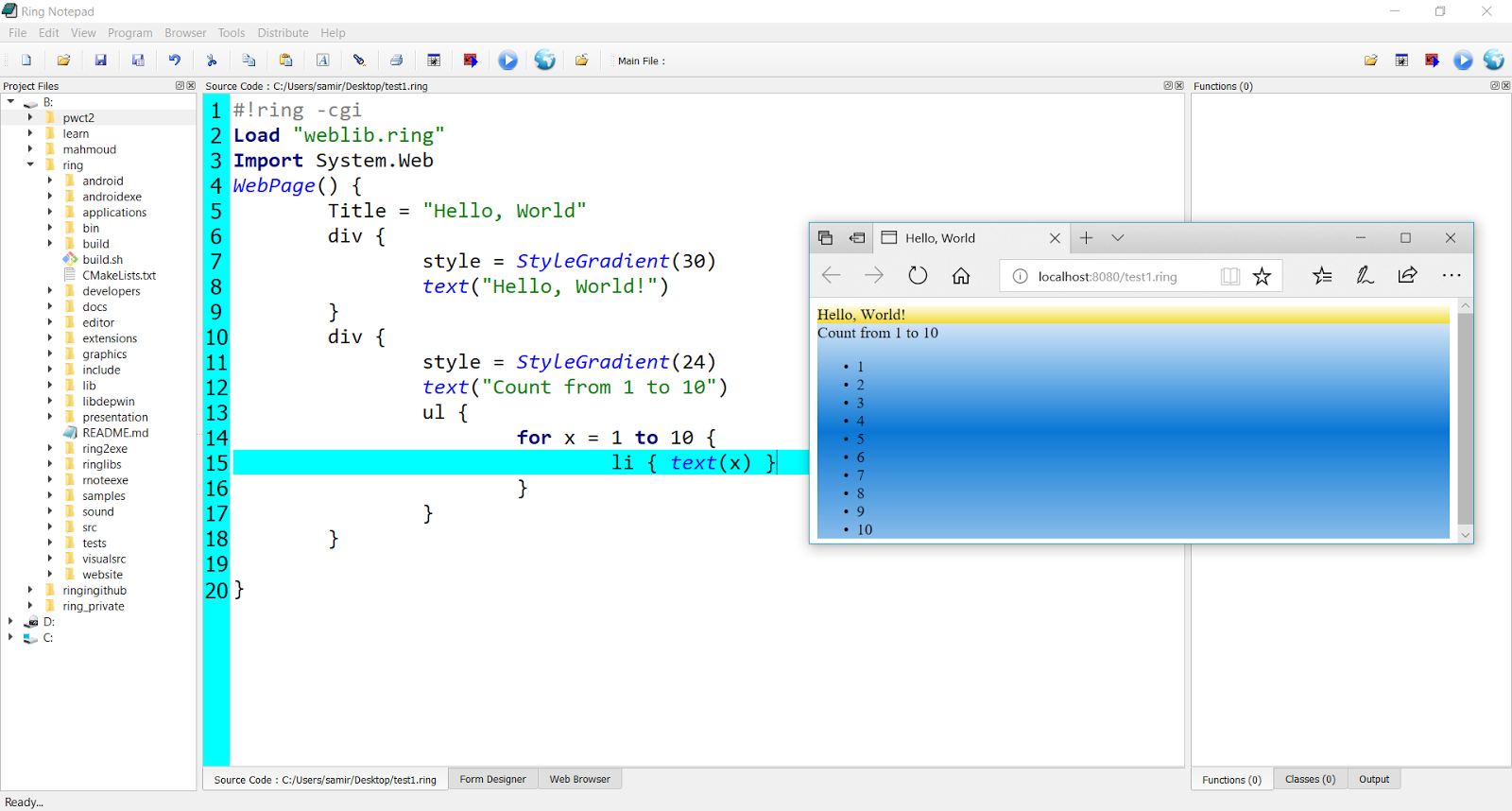
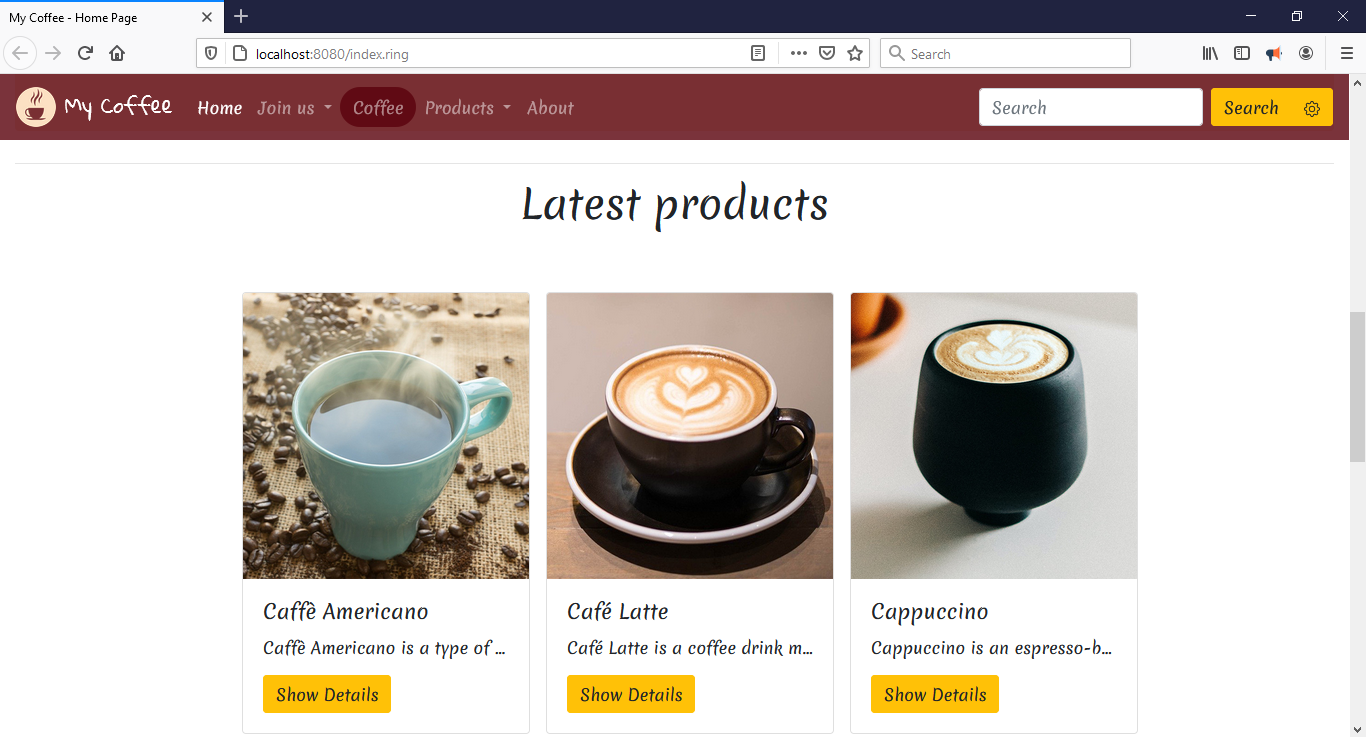
## Mobile Development
Using Ring we can distribute our applications for mobile platforms (Android, iOS, etc.)
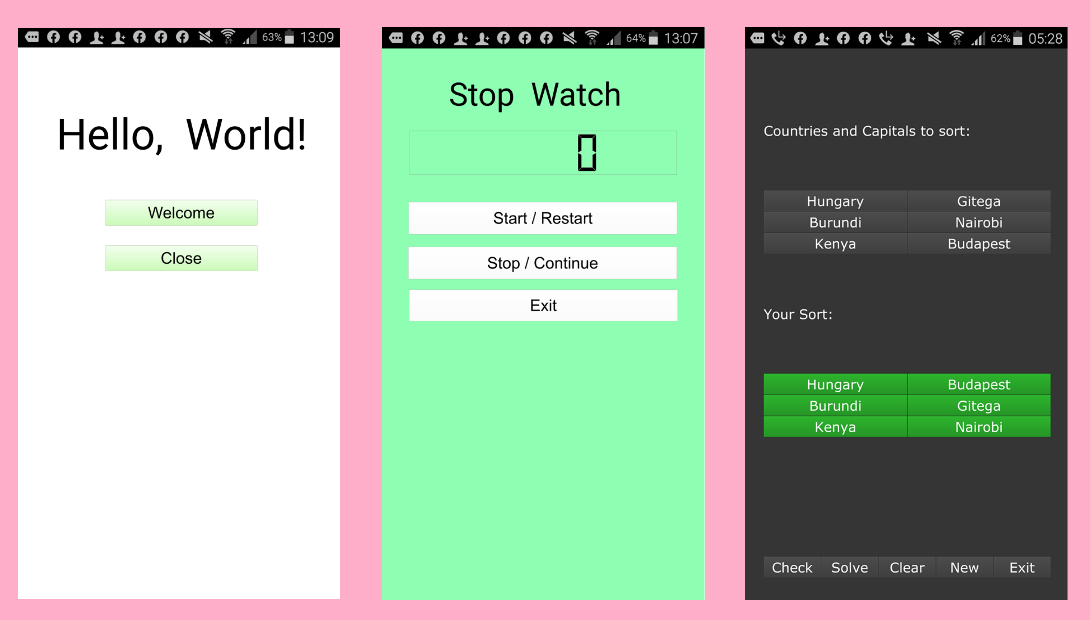
## Building Tools (Command Line)
Using Ring we can whip up a CLI tool quickly and distribute it with ease.
The Ring Package Manager is an example of a powerful tool that we developed using Ring in a few hours.
We recorded the development time (21 hours of development includes explaining each step)
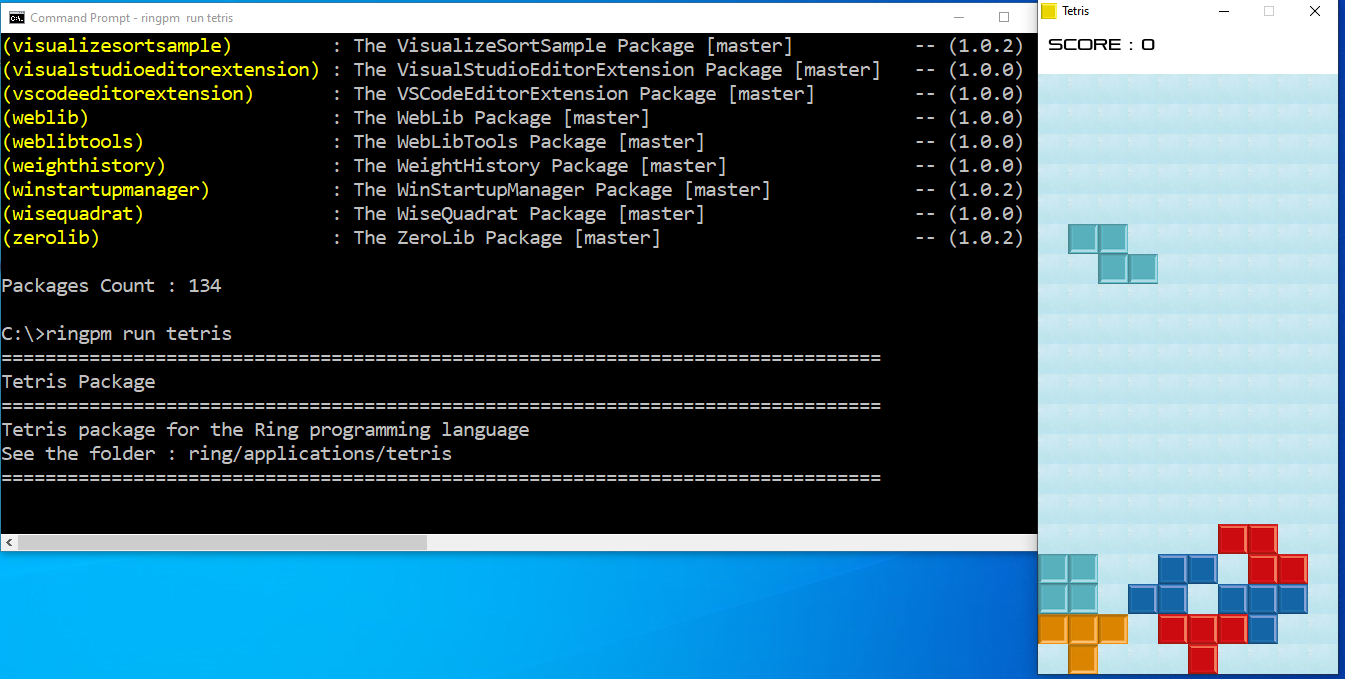
# Why Ring?
The language is simple, trying to be natural, encourage organization, and comes with transparent and visual implementation.
It comes with compact syntax and a group of features that enable the programmer to create natural interfaces and declarative domain-specific languages in a fraction of time.
It is very small, flexible, and comes with a smart garbage collector that puts the memory under the programmer's control.
It supports many programming paradigms, comes with useful and practical libraries.
The language is designed for productivity and developing high-quality solutions that can scale.
## Designed for a Clear Goal
* Applications programming language.
* Productivity and developing high-quality solutions that can scale.
* Small and flexible language that can be embedded in C/C++ projects.
* Simple language that can be used in education and introducing Compiler/VM concepts.
* General-Purpose language that can be used for creating domain-specific libraries, frameworks, and tools.
* Practical language designed for creating the next version of the Programming Without Coding Technology software.
## Simple
Ring is a very simple language and has a very straightforward syntax.
It encourages programmers to program without boilerplate code.
To print something using the standard output, We can use the 'See' command.
```ring
see "Hello, World!"
```
The Main function is optional and will be executed after the statements, and is useful for using the local scope.
```ring
func main
see "Hello, World!"
```
Uses Dynamic Typing and Lexical scoping.
Also, we can use the '+' operator for string concatenation.
```ring
nCount = 10 # Global variable
func main
nID = 1 # Local variable
see "Count = " + nCount + nl + " ID = " + nID
```
## Trying to be natural
Ring is not case-sensitive
```ring
see "Enter your name ? "
give name
see "Hello " + Name # Name is the same as name
```
The list index starts from 1
```ring
aList = ["one","two","three"]
see aList[1] # print one
```
Call functions before the definition
```ring
one()
two()
three()
func one
see "One"
func two
see "two"
func three
see "three"
```
The assignment operator uses Deep copy (no references in this operation)
```ring
aList = ["one","two","three"]
aList2 = aList
aList[1] = 1
see alist[1] # print 1
see aList2[1] # print one
```
Pass numbers and strings by value, but pass lists and objects by reference.
The for-in loop can update the list items.
```ring
func main
aList = [1,2,3]
update(aList)
see aList # print one two three
func update aList
for x in aList
switch x
on 1 x = "one"
on 2 x = "two"
on 3 x = "three"
off
next
```
Using Lists during definition
```ring
aList = [ [1,2,3,4,5] , aList[1] , aList[1] ]
see aList # print 1 2 3 4 5 1 2 3 4 5 1 2 3 4 5
```
Exit from more than one loop
```ring
for x = 1 to 10
for y = 1 to 10
see "x=" + x + " y=" + y + nl
if x = 3 and y = 5
exit 2 # exit from 2 loops
ok
next
next
```
## Encourage Organization
The language encourage organization, Forget bad days using languages where the programmer start with function then class then function and a strange mix between things!
Each source file follow the next structure
Load Files
Statements and Global Variables
Functions
Packages and Classes
This enables us to use Packages, Classes, and Functions without the need to use a keyword to end these components.
We can write one line comments and multi-line comments
The comment starts with # or //
Multi-line comments are written between /* and */
```ring
/*
Program Name : My first program using Ring
Author : Ring Team
*/
see "What is your name? " # print message on screen
give cName # get input from the user
see "Hello " + cName # say hello!
// See "End of Program!"
```
## Data Representation
Ring contains only 4 types that represent the program data
These types are (String, Number, List & Object)
The idea is to have many use cases for each type which increase the flexibility and the ability
to write functions that are more usable in different situations.
The String type is used to represent:
* One character
* A string of many characters
* Multi-line string
* Binary Data
```ring
cStr1 = "a" # One character
cStr2 = "Hello, World!" # A string of many characters
cStr3 = "Hello
Welcome to the Ring language!
" # Multi-line string
cStr4 = read(EXEFileName()) # Read executable file (Binary Data)
```
The Number type is used to represent
* Boolean Values
* Signed/Unsigned Integers
* Float/Double
```ring
nNum1 = True # Boolean Value (1)
nNum2 = False # Boolean Value (0)
nNum3 = 10 # Integer
nNum4 = -10 # Signed Integer
nNum5 = 1250.11 # Float/Double
```
The List type is used instead of
* One Dimension Arrays
* Multi-Dimension Arrays
* Lists of multiple types
* Nested Lists
* Hash Tables (Key & Value)
* Tree
* Wrapper around a C Pointer
```ring
aList1 = ["one","two","three"] # Strings
aList2 = [1,2,3,4,5,6,7,8,9,10] # Numbers
aList3 = ["Ring",1234] # Multiple types
aList4 = [["Fayed","Egypt"],["Mansour","Tunisia"]] # Nested Lists
aList5 = [ :name = "Fayed", :country = "Egypt"] # Hash Table
```
The Object type is used to represent objects created from classes
Using classes and operator overloading we can create custom types
## Compact Syntax
The language is not line-sensitive, you don't need to write ; after statements, also you don't need to press ENTER or TAB, so we can write the next code
```ring
see "The First Message" see " Another message in the same line! " + nl
see "Enter your name?" give Name see "Hello " + Name
```
The next code creates a class called Point contains three attributes X,Y, and Z. No keywords is used to end the package/class/function definition. Also, we can write the attributes' names directly below the class name.
```ring
class Point X Y Z
```
We can use classes and functions before their definition, In this example, we will create a new object, set the object attributes then print the object values.
```ring
o1 = new point o1.x=10 o1.y=20 o1.z=30 see O1 class Point X Y Z
```
Instead of using the dot '.' operator to access the object attributes and methods, we can use braces { } to access the object, then we can use the object attributes and methods.
```ring
o1 = new point { x=10 y=20 z=30 } see O1 class Point X Y Z
```
Now we will call a method after accessing the object using { }
```ring
oPerson = new Person
{
Name = "Somebody"
Address = "Somewhere"
Phone = "0000000"
Print() # here we call the Print() method
}
class Person Name Address Phone
func Print
see "Name :" + name + nl +
"Address :" + Address + nl +
"Phone : " + phone + nl
```
When we use { } to access the object then write any attribute name, the language will check the class for any setter/getter methods that will be called automatically.
```ring
new Number {
see one # Execute GetOne()
see two # Execute GetTwo()
see three # Execute GetThree()
}
class Number one two three
func GetOne
see "Number : One" + nl
return 1
func GetTwo
see "Number : Two" + nl
return 2
func GetThree
see "Number : Three" + nl
return 3
```
## Syntax Flexibility
Ring comes with many styles for writing your source code!
Also, You can change the language keywords and operators and create your custom style!
### The First Style
```ring
? "Welcome to Ring! "
new test { start() }
class Test
x=10 y=20
func start
? "x+y=" + (x+y)
for t=1 to 10
? "t = " + t
if t=3
? "Three"
ok
next
```
### The Second Style
```ring
def main
put "Welcome to Ring! " + nl
new test { start() }
end
class Test
x = 10
y = 20
def start
put "x+y=" + (x+y) + nl
for t=1 to 10
put "t = " + t + nl
if t=3
put "Three" + nl
end
end
end
end
```
### The Third Style
```ring
load "stdlib.ring"
func main() {
print("Welcome to Ring! \n")
new test { start() }
}
class Test {
x = 10
y = 20
func start {
print("x+y=" + (x+y) + "\n")
for t=1 to 10 {
print("t = " + t + " \n")
if t=3 {
print("Three \n")
}
}
}
}
```
### Change Keywords
```ring
ChangeRingKeyword See Print
Print "Hello, World!"
ChangeRingKeyword Print See
See "Hello, World!"
ChangeRingKeyword See Show
Show "Hello, World!"
```
## Define Natural Statements based on Object-Oriented
After the object access using { } if the class contains a method called BraceEnd() it will be executed!
```ring
TimeForFun = new journey
# The first surprise!
TimeForFun {
Hello it is me # What a beautiful programming world!
}
# Our Class
class journey
hello=0 it=0 is=0 me=0
func GetHello
See "Hello" + nl
func braceEnd
See "Goodbye!" + nl
```
We can execute code written in strings using the Eval() function
```ring
cCode = "See 'Code that will be executed later!' "
Eval(cCode) # execute the code to print the message
```
We can create a list then execute code generated from that list
```ring
aWords = ["hello","it","is","me"]
for word in aWords cCode=word+"=0" eval(cCode) next
```
We can read text files using the Read(cFileName) function and we can write files using the Write(cFileName,cString) function.
```ring
see "Enter File Name:" give cFileName see read(cFileName) # Print the file content
```
The next example presents how to create a class that defines two instructions
The first instruction is : I want window
The second instruction is : Window title = Expression
Also, keywords that can be ignored like the **the** keyword
```ring
new App
{
I want window
The window title = "hello world"
}
class App
# Attributes for the instruction I want window
i want window
nIwantwindow = 0
# Attributes for the instruction Window title
# Here we don't define the window attribute again
title
nWindowTitle = 0
# Keywords to ignore, just give them any value
the=0
func geti
if nIwantwindow = 0
nIwantwindow++
ok
func getwant
if nIwantwindow = 1
nIwantwindo ... ...
近期下载者:
相关文件:
收藏者: